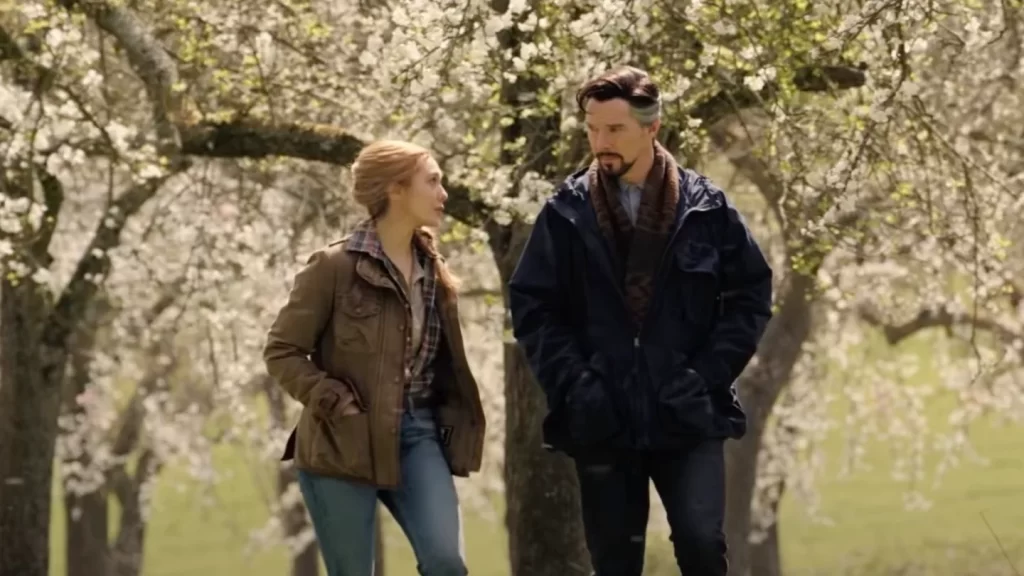This is a spoiler-free article about Sam Raimi’s “Doctor Strange in the Multiverse of Madness.” The film is currently in theaters.
You accidentally opened a portal that bridges your Earth and different dimensions and universes; because a spell you were trying to conjure got corrupted by your young ally’s constant requests for alterations to the spell. You eventually saved the day by sending those who sneaked into Earth back to where they came from. Problem solved? Maybe not. And not if you’re the Master of the Mystic Arts, who just unleashed a multiverse of madness.
“Doctor Strange in the Multiverse of Madness” is your standard Marvel Cinematic Universe (MCU) entry: big and bold, intimate and subdued, calculated and cold. Just how much of a difference maker having director Sam Raimi (and Danny Elfman!) back on board can be—that is what’s in play.
[Related Article: Review: ‘Doctor Strange in the Multiverse of Madness’ Features Strong Performances and Impressive Visual Effects]
How a Single Action Created a Ripple Effect—and Opened a ‘Multiverse of Madness’
“Doctor Strange in the Multiverse of Madness” picks up a few months after the events of “Spider-Man: No Way Home.” At this point, people have become aware of Earth’s mightiest heroes and their deeds to save Earth from destruction. Dr. Stephen Strange himself has become sort of a celebrity; with people asking to take photos of him even as he demands answers from a mysterious teenager with abilities. Even his former colleague and rival surgeon Nicodemus West calls him the best surgeon and the best superhero.
When he sleeps, however, Strange has nightmares where he accompanies a girl in a portal to retrieve a thing that would help the girl control her powers. He betrays her, however, and they both die. When that girl shows up in New York City—on the day Strange’s former flame Christine Palmer gets betrothed to someone else—Strange finds out that it wasn’t a nightmare. The same girl with mysterious abilities tells him that it’s a version of him from another universe.
Sensing danger at the prospect of multiverses giving way to cracks as a result of his actions in ‘No Way Home,’ Strange enlists the help of an unlikely ally: A [scarlet]witch living peacefully in hiding. Stating her desire not to use her powers anymore, Wanda tells Strange that Vision had his theories about the multiverse and the dangers it brings. When Strange confirms this and asks for Wanda’s help, the movie takes a sharp 180 and goes full-on batshit crazy.
And with someone like Sam Raimi calling the shots, why aren’t I surprised?
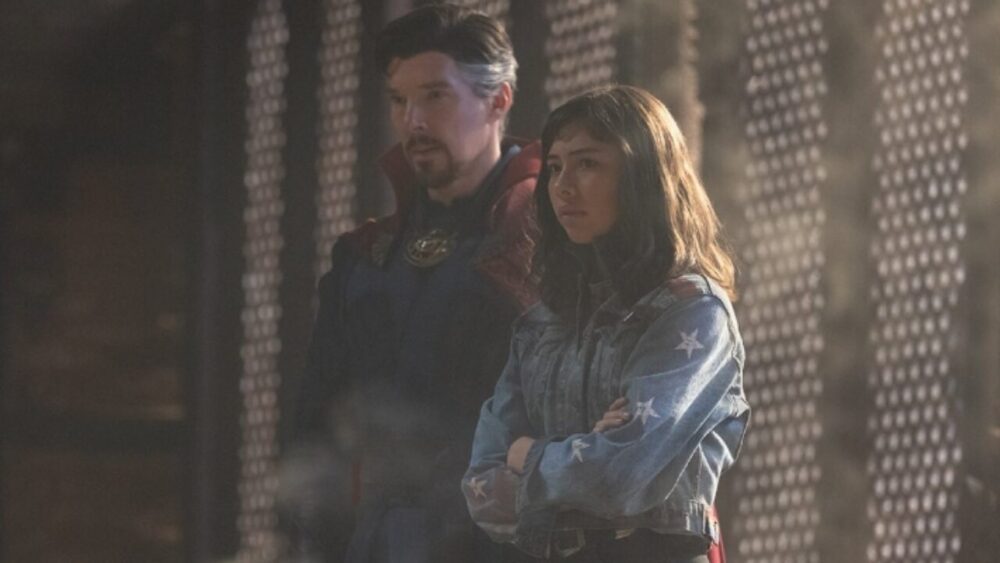
Losing One’s Way in the Trappings of [Franchise Movie] Conventions
“Doctor Strange in the Multiverse of Madness” marks Sam Raimi’s return to directing after a nine-year break. Following his 2013’s “Oz the Great and Powerful,” Raimi’s name had been linked to several projects, none of which came to fruition. So it’s no surprise how much his fans have been waiting for this sequel to the 2016 film “Doctor Strange.” More importantly, people want to know whether Raimi (a known highly dynamic filmmaker) can work around MCU’s conventional formula of storytelling.
Here’s the thing: Sure, there are enjoyable Easter eggs in the film that are Raimi’s directorial trademarks. The wipe as transition effect, the slapstick-inspired camerawork, the camp—all of these spell out ‘Raimi’ in shouty, bloody capitals.
Working on a screenplay by Michael Waldron (“Loki,” “Heels”), Raimi’s return to the director’s chair doesn’t particularly scream “I’m back!” In contrast, it looks like a filmmaker testing the waters after a nine-year absence. And what better way to test the waters than a franchise superhero film that runs on a solid—albeit predictable—formula and almost always guarantees financial and critical success?
However, when all is said and done, “Multiverse of Madness” feels like a forced union between an auteur with highly defined and unrestrained ostentatiousness, and a studio hell-bent on keeping the well-oiled machine running with tried-and-tested methods. And the results of that awkward fit sticks out like a big toe.
The narrative predictability of “Multiverse of Madness,” visual flair and emotional performances aside, prevail over Raimi’s maverick filmmaking. And while his usual trademarks are in the film (Pizza Poppa is a very nice touch), the movie as a whole doesn’t jell as cohesive as they should.
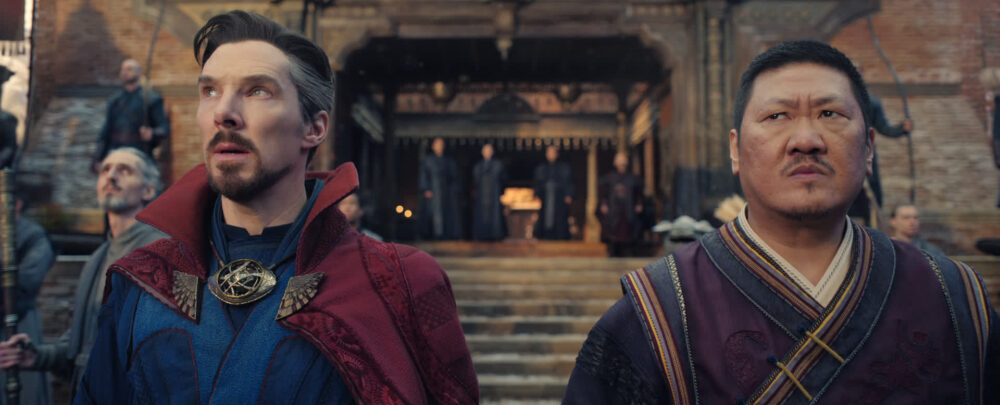
‘Multiverse of Madness’: Convenient Avenue for Crossovers…or Franchise Reboots
This might be a hot take, but this needs to be said: Introducing the multiverse is a double-edged sword. For crossovers, this is very much in the alley of fan service. Imagine the X-Men appearing alongside the Avengers. Or Deadpool trading wisecracks with Spider-Man (or Spider-Men). Or the Fantastic Four now finally having a great film that they simply couldn’t get.
But let’s focus on the dramatic impact of the films, “Multiverse of Madness” included. While the concept of multiverses tantalizes fans of movie franchises that employ this narrative device, ultimately it reduces the emotional impact of the film several times over. This is important, because knowing that there are infinite universes means that a character mourned over in previous installments could simply return as their own selves from another universe…featuring the same actors.
Worse, they could be played by another actor—preferably younger and who commands a lower salary, both to accommodate future installments.
And judging by the way things are shaping up with Marvel Studios, it looks like we’re on the lookout for Scenario #2.
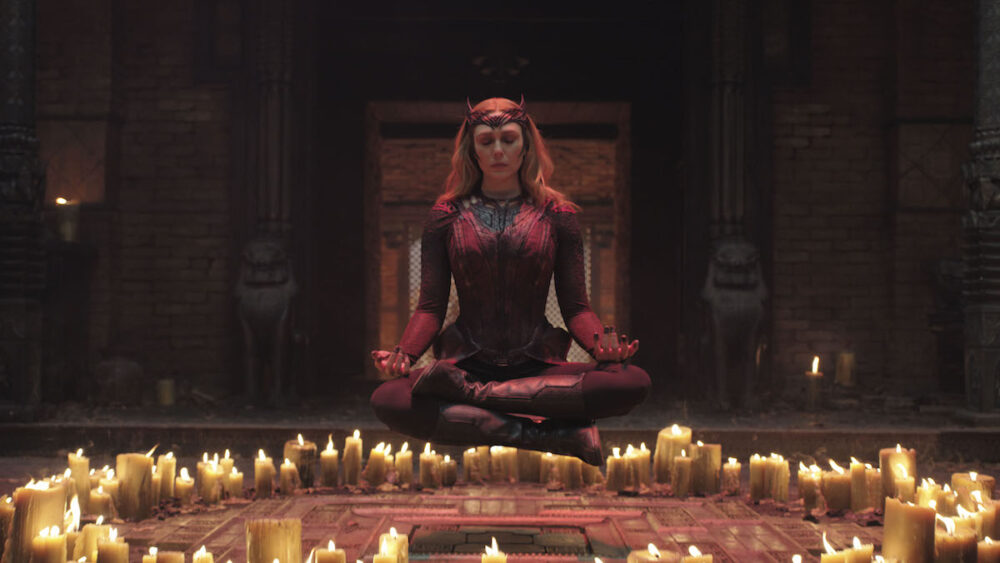
Emotions Underscoring Unresolved Grief and Regret Make for Top-Notch Performances
Yes, it’s a little disconcerting to realize that the emotional stakes eventually mean little, when all one has to do is consider the other universes out there. Who knows, their favorite character who had just passed is living happily someplace else—and is due for a visit on their Earth anytime now.
For me, this is vital, since Elizabeth Olsen and Benedict Cumberbatch give very powerful performances in the movie. Cumberbatch’s Strange tries to come to terms with the reality that he and Christine wouldn’t have worked things out anyway; and that no matter what universe he seeks, he might get the same outcome again and again. This is a nice callback to that “What If…?” episode, which deserves a good re-watch.
But here, I’m reserving my praise for Olsen. Her Wanda, in particular, is heartbreaking. The character’s trauma depicted in WandaVision comes to the fore here; she grapples with accepting the fact the children she conjured will never be real. Any parent would go for unspeakable pain just to be with their children; Wanda’s pain is something that just resonates with great effect.
And when we think of it, the film should make sense. After all, these are people with the ability to wield reality—and even seek new dimensions—struggling to accept the one before them.
So what could stand in the way of great storytelling?
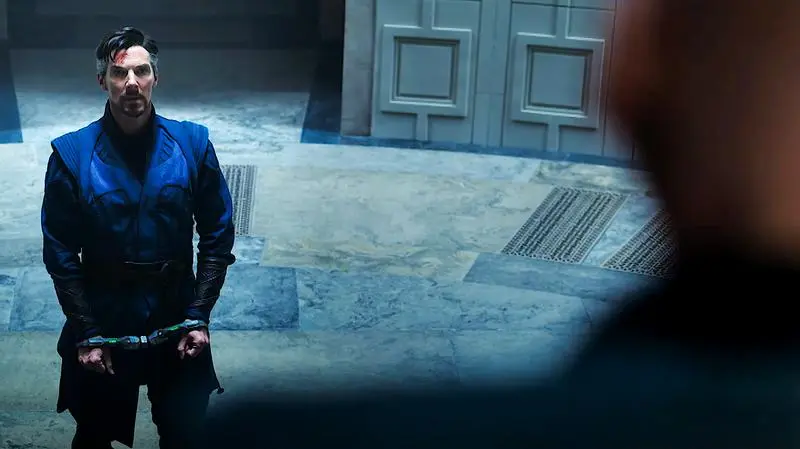
When Fan Service Prevails Over Cohesive Storytelling
Try as one might to avoid the years-long discussion about superhero films being theme parks, this time it begs some revisiting. And when the story suffers as a result of spectacle, that’s where we draw the line.
“Multiverse of Madness,” in all its unapologetic and uneven glory, is MCU’s follow-up to the fan service they gave audiences with “Spider-Man: No Way Home.” Indeed, the film doesn’t shy away from blatantly giving in to fan cravings, and, understandably, audiences will consume those scenes with hearty delight.
As the film’s plot unfolds and builds up to reveal its surprises, the thrill consequently subsides. The excitement suddenly dissipates. This is followed by the irresistible urge to mentally command the affair to pace itself better to make way for another wave of climax.
No, we’re not talking about theme park rides. We’re still talking about the film.
With all the callbacks, cameos, and visual effects at play, I ended up zeroing in on one critical thing. While the film may satiate one’s eyes and use fan service to tease bigger things to come, the most important aspect of the movie—the core story within—remained elementary at best.
Ultimately, “Doctor Strange in the Multiverse of Madness” is a visual treat. It’s a film that knows the demands of its fanbase—and promptly delivers on its promise.
Whether it makes good on what the audience needs, however, is pretty much up in the air.
Support the Site: Consider becoming a sponsor to unlock exclusive, member-only content and help support The Movie Buff!

